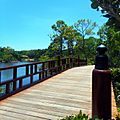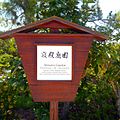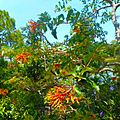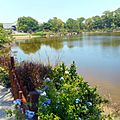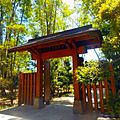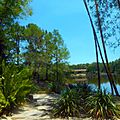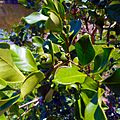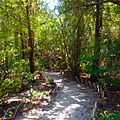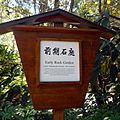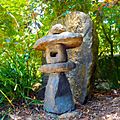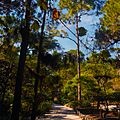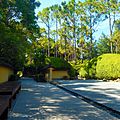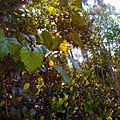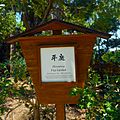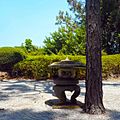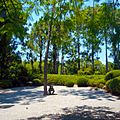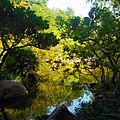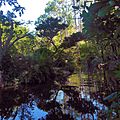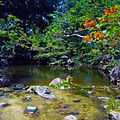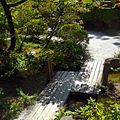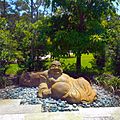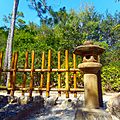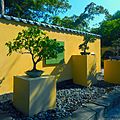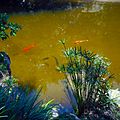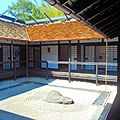Roji-en Japanese Gardens facts for kids
The Roji-en: Garden of the Drops of Dew is a beautiful Japanese garden in Delray Beach, Florida, USA. It is also known as The George D. and Harriet W. Cornell Japanese Gardens. This amazing place has six different gardens. Each garden shows how Japanese gardens have changed over many centuries.
Roji-en covers 16 acres (about 6.5 hectares) of land. It is part of the Morikami Museum and Japanese Gardens. This museum is special because it is the only one in the U.S. that focuses on the living culture of Japan. The gardens are open to everyone, but they are closed on Mondays and big holidays. You can visit the gardens when you pay to enter the museum.
These gardens are some of the biggest Japanese gardens in the world. They were designed by Hoichi Kurisu. The gardens were built between 1999 and 2001. The land for the gardens was given by George Morikami in 1973. In 2004, a magazine called Journal of Japanese Gardening said Morikami was the eighth best public Japanese garden in North America.
Contents
Explore the Six Gardens
A path about a mile long takes you through six different Japanese gardens. Each garden shows a different style from the 8th to the 20th centuries. As you walk, you will see tall pine trees, thick bamboo groves, pretty waterfalls, and large granite rocks.
- Shinden Gardens (9th - 12th centuries): These were gardens for rich people. They looked like Chinese gardens with big ponds and islands.
- Paradise Gardens (13th and 14th centuries): These gardens were inspired by Buddhism. They had hills, ponds, and islands, but were smaller than Shinden Gardens.
- Early Rock Gardens (older styles): These gardens used rocks to look like waterfalls and rivers. They showed nature in a simple, artistic way.
- Late Rock Gardens (15th century): These are called karesansui gardens. They are mostly made of gravel, stones, and sand. They create a dry landscape.
- Flat Gardens (16th and 17th century): These gardens use shakkei, which means "borrowed landscape." They use the views outside the garden as part of the design.
- Modern Romantic Gardens (from the Edo period and later): These are gardens where you can stroll around. They were influenced by gardens from Western Europe.
Chie no Wa: The Wisdom Ring
When you leave the museum to start your garden tour, you will see the Chie no Wa Wisdom Ring. This is a copy of a 500-year-old stone lantern from Miyazu, Japan. Miyazu is a sister city to Delray Beach. The real Wisdom Ring, or Chie no Wa in Japanese, is at a temple. It honors Monju, a Buddhist god of wisdom.
The people of Miyazu gave this copy to the Morikami Museum in 1997. It was a gift to celebrate the museum's 20th birthday.
Woodruff Memorial Bridge
The James and Hazel Gates Woodruff Memorial Bridge is a special bridge. It was built by James G. Woodruff, a U.S. Naval commander. He was a veteran of Pearl Harbor. He built it to remember his wife, Hazel, who loved Japanese gardens very much.
This bridge is at the entrance to the gardens. It stands for the strong connection between Japan and the state of Florida.
Shinden Garden
The Shinden Garden is a beautiful part of Roji-en. It shows the style of gardens from the 9th to 12th centuries. These gardens were often found at the homes of noble families. They usually had large ponds and islands. You can see many different plants and trees here. There is also a special gate called Kodai-mon, or "Ancient Gate." It leads to a quiet bamboo grove.
Paradise Garden
The Paradise Garden reflects garden styles from the 13th and 14th centuries. These gardens were often inspired by Buddhist ideas. They feature hills, ponds, and islands, much like the Shinden Gardens, but on a smaller scale. You might also see a shishi odoshi here. This is a bamboo water feature that makes a gentle clacking sound. It was originally used to scare away deer.
Early Rock Garden
The Early Rock Garden shows how Japanese gardens used to represent nature in a simple way. Instead of real water, rocks and gravel are arranged to look like waterfalls or streambeds. This style uses very few plants. It focuses on the shapes and textures of the rocks. You can also see a traditional stone lantern here.
Karesansui: Late Rock Garden
The Karesansui Late Rock Garden is from the 15th century. These gardens are almost entirely made of gravel, stone, and sand. They are also called "dry landscape" gardens. The gravel is often raked into patterns that look like water ripples. The rocks represent islands or mountains. This garden is a peaceful place for quiet thought.
Hiraniwa: Flat Rock Garden
The Hiraniwa Flat Garden shows a style from the 16th and 17th centuries. This garden uses a technique called shakkei, or "borrowed landscape." This means the garden design includes the views of things outside the garden, like distant trees or hills. It makes the garden feel larger and more connected to its surroundings. You will see a stone lantern and pine trees in this calm space.
Modern Romantic Gardens
The Modern Romantic Gardens are inspired by styles from the Edo period and later. These are "stroll gardens," designed for you to walk through and enjoy different views. They were also influenced by gardens from Western Europe. You will find flowing creeks, peaceful ponds, and even a cascading waterfall. There are also wooden bridges and benches where you can relax and take in the beauty.
Yamato Island
Yamato Island is another interesting part of the gardens. Here you can find a statue of Hotei, who is known as the Buddha of Happiness. There is also the Yamato-kan Bridge. You can visit a special bonsai garden on the island. Bonsai are miniature trees grown in pots. They are carefully shaped to look like full-sized trees. You can see different types of bonsai, like Cypress and Tamarind trees.
The ponds around Yamato Island are home to many colorful Koi fish and turtles. You can often see them swimming among the papyrus reeds. There is also a tea house on the island with its own small rock and sand garden inside.






